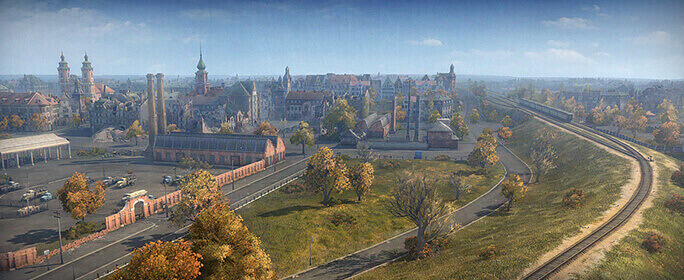Vehicles On The World Map: Suburban Ensk

Ensk, suburban town N – inhabited by fictitious heroes of Russian classical literature from Sanya Grigoryev to Ostap Bender – first appeared in World of Tanks in April 2010. The industrial area is neighbours with the suburban area and a large railway junction. The railway station forecourt features many small peculiarities of the epoch: a loudspeaker, a bicycle leaning against a post clock, and an old propaganda poster hanging on a bulletin board. If you ever drive through the cosy streets of Ensk, take a closer look at houses that your enemies use as cover, and maybe you will recognise the places you’ve visited.
One of the old urban World of Tanks maps—small Soviet Ensk—appeared after Himmelsdorf, the fictitious West European town. Both the name and content of the map were supposed to be generalised, just like on Himmelsdorf.
Level Artists worked on the map with a mind to avoid direct associations with real places on the world map. At the same time, Ensk was intended to feature many inconspicuous details, which were meant to give players the impression that they were in a small Soviet town. Therefore, many elements appeared on the map: cozy quarters with low houses, suburban wooden huts, the railway station forecourt, and many nostalgic symbols, inclusive of old linen hanging on ropes, iron slides, creaky swings, news stalls, pigeon houses, and even booths normally operated by traffic policemen.
It is an interesting fact that Ensk does not end with the area available to vehicles. In the fog, the map is continued by a neat block of wooden houses that were created under the influence of peculiar huts in the Sormovsky district of Nizhny Novgorod.
The full list of geographical references is quite impressive: Odessa, Mytishchi, Podolsk, Bishkek... However, the main thing is that any post-Soviet town or city has a Traktorozavodsky district or unique houses built in the Stalin Empire style. What resemblance comes to your mind?



